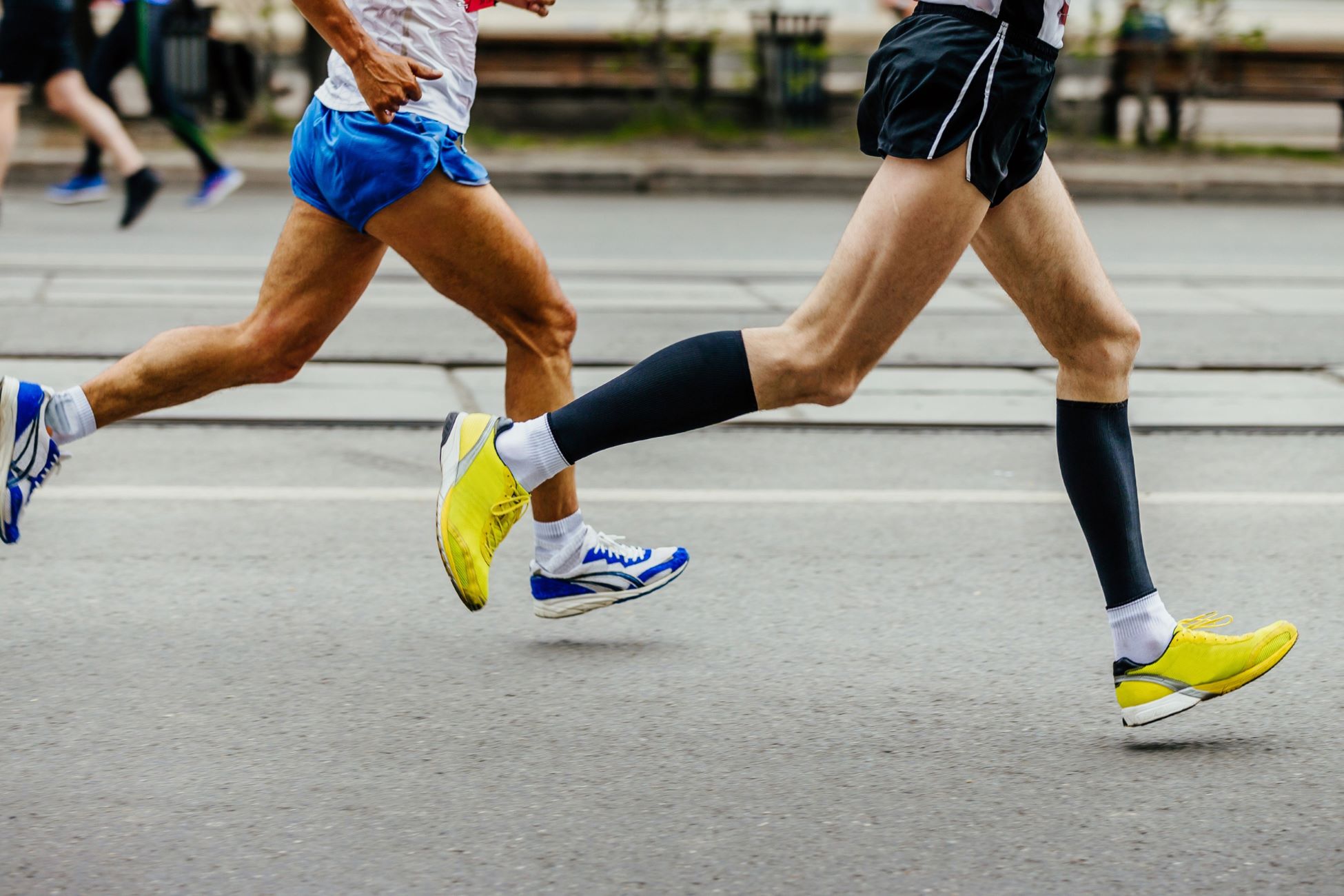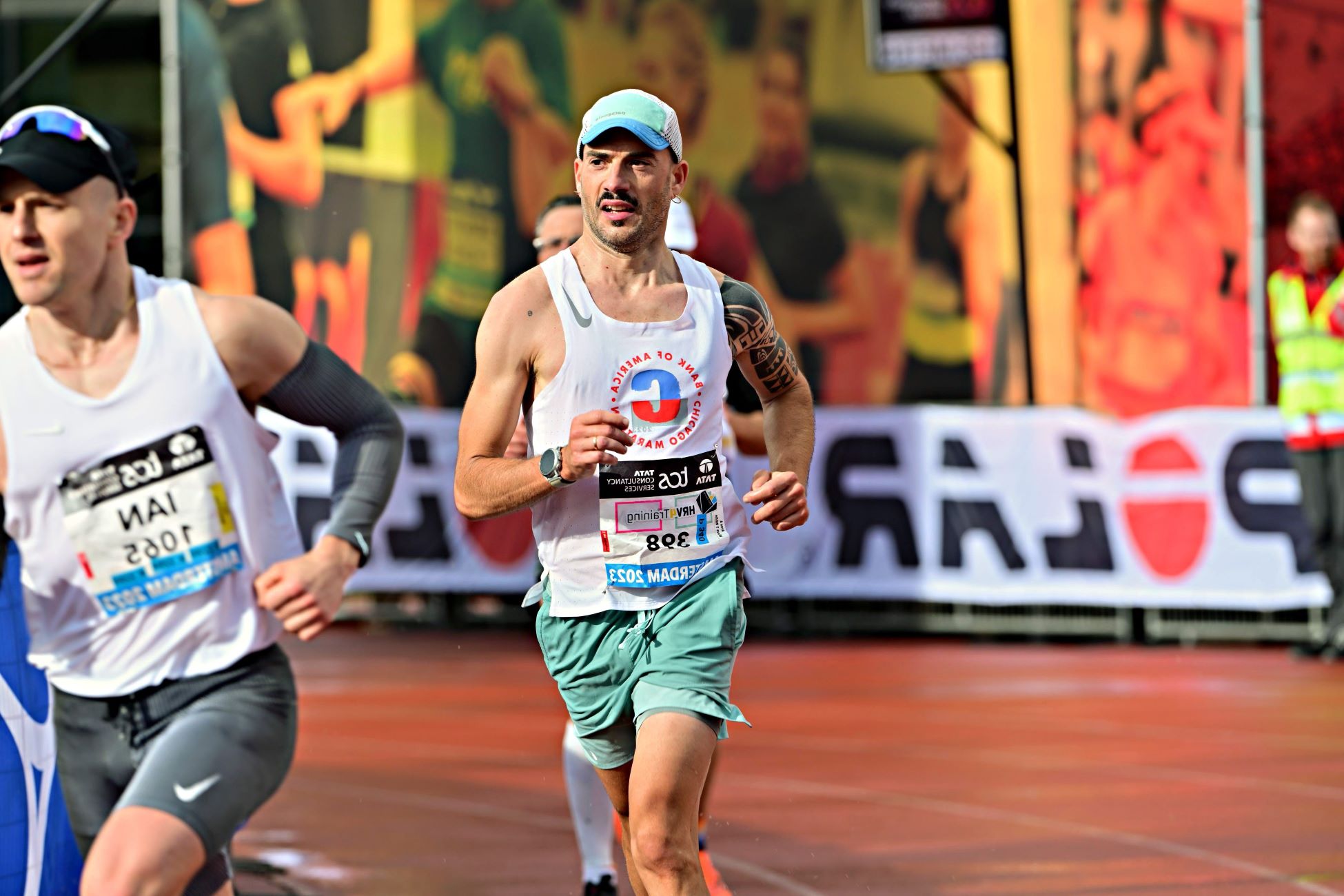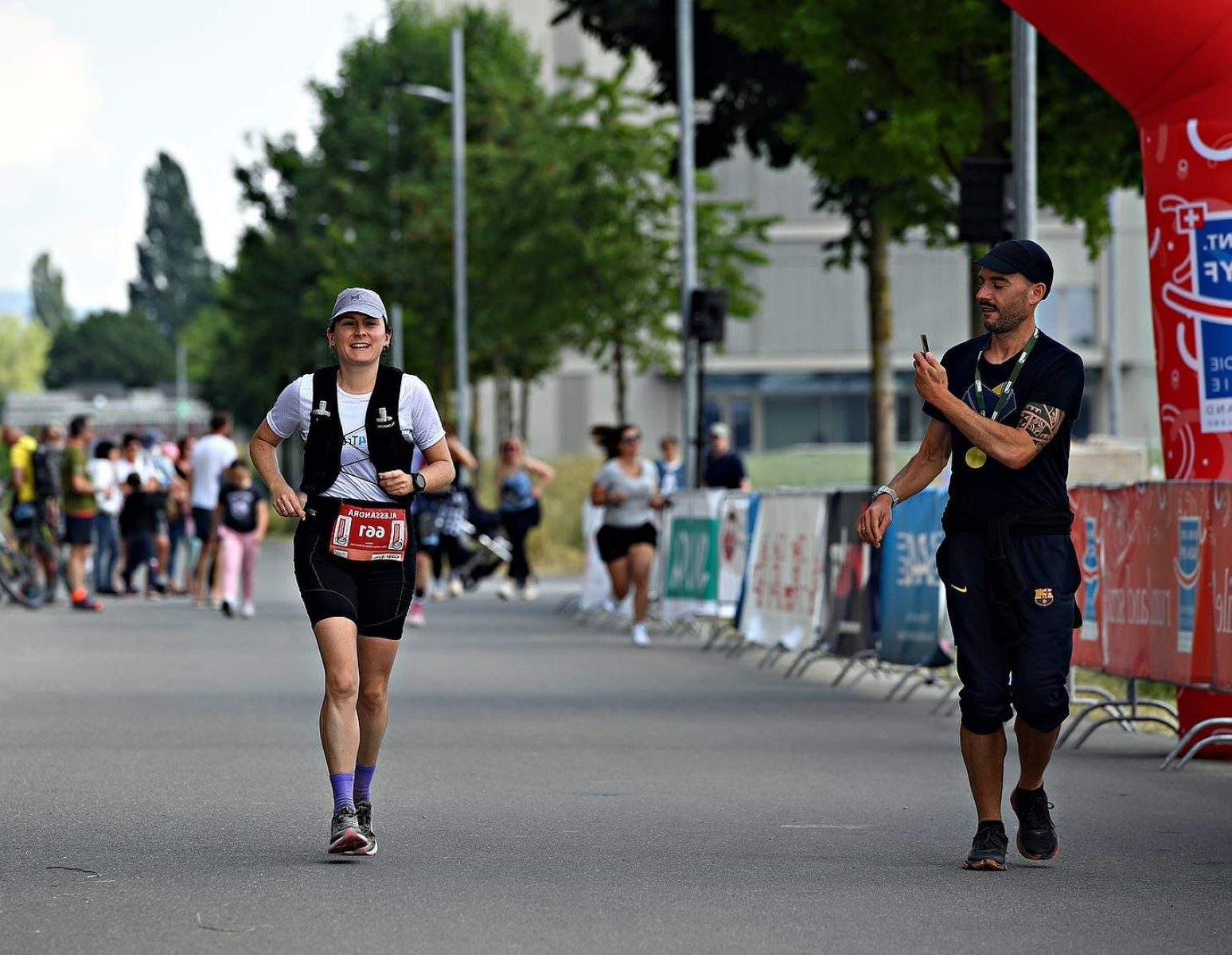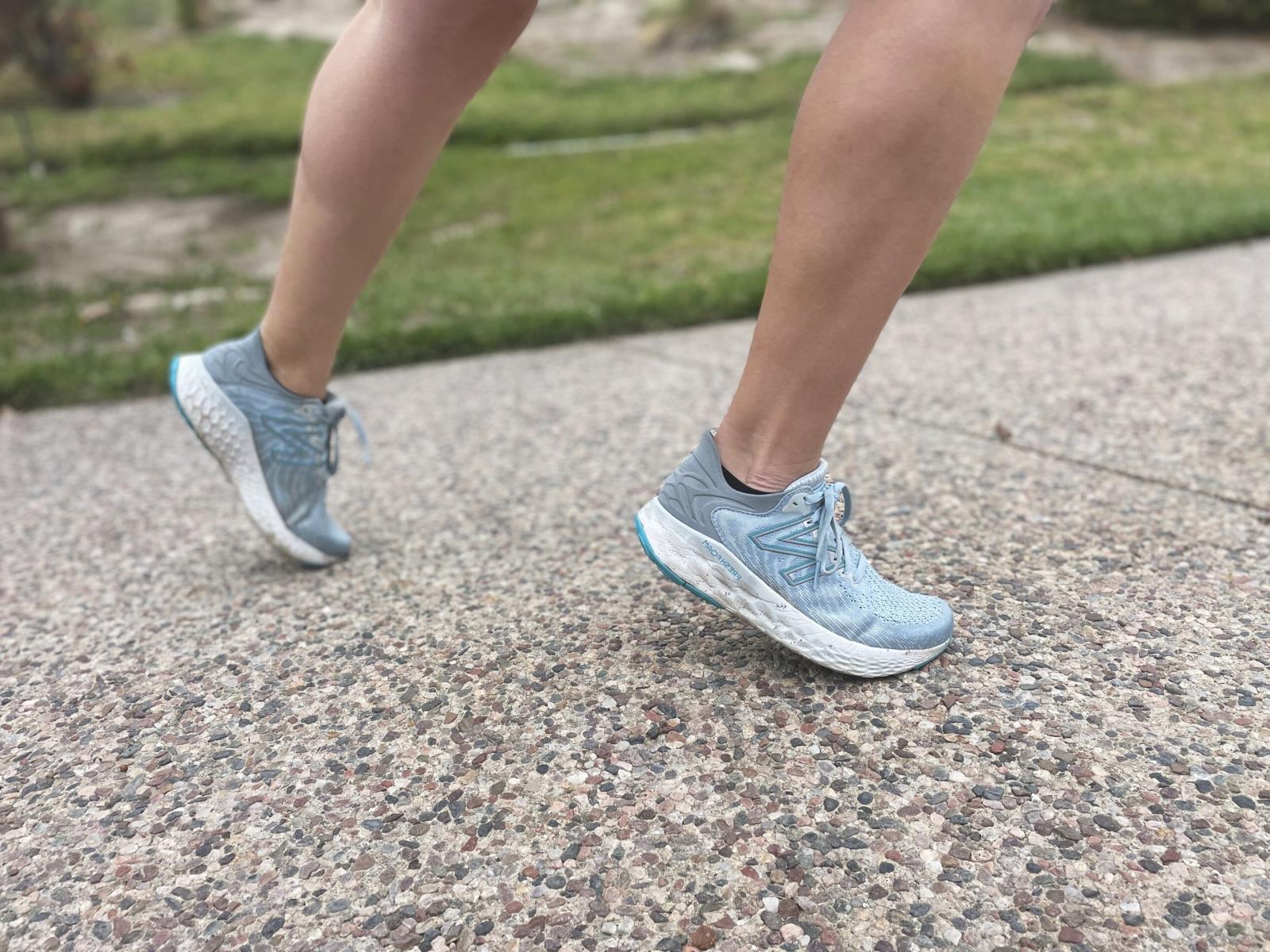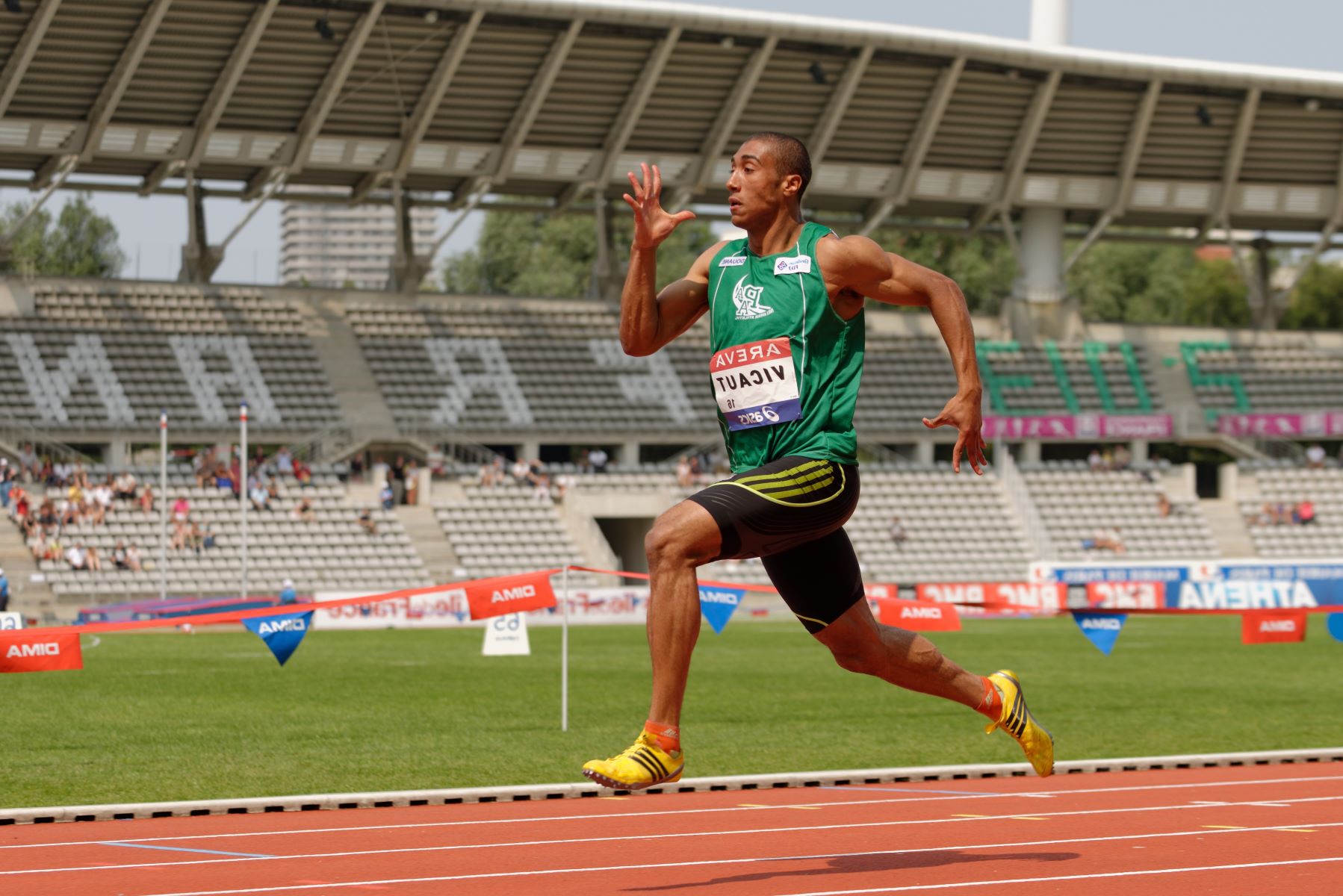Home>Training & Techniques>A Coach’s Guide: Tips For Increasing Running Speed


Training & Techniques
A Coach’s Guide: Tips For Increasing Running Speed
Published: March 3, 2024
Discover effective training and techniques to boost your running speed with this comprehensive coach's guide. Unlock your potential and achieve your speed goals today!
(Many of the links in this article redirect to a specific reviewed product. Your purchase of these products through affiliate links helps to generate commission for Therunningadvisor.com, at no extra cost. Learn more)
Table of Contents
Understanding the Mechanics of Running
Running is a fundamental human movement that involves a complex interplay of biomechanics and physiology. Understanding the mechanics of running is crucial for improving speed and efficiency. Here are the key elements to consider:
Posture and Alignment
Maintaining proper posture and alignment is essential for efficient running. A slight forward lean from the ankles, a straight back, and relaxed shoulders can help optimize the body's position for propulsion. Engaging the core muscles to stabilize the torso and pelvis can also contribute to better running mechanics.
Foot Strike
The foot strike pattern plays a significant role in running mechanics. Runners commonly land on their heels, midfoot, or forefoot. Each foot strike pattern has its advantages and considerations. For instance, landing on the midfoot or forefoot may reduce impact forces and enhance propulsion, while landing on the heel may provide more cushioning.
Stride Length and Cadence
Optimizing stride length and cadence can greatly impact running speed. Stride length refers to the distance covered with each step, while cadence is the number of steps taken per minute. Finding the right balance between stride length and cadence is crucial for efficient running. Increasing cadence while maintaining a comfortable stride length can lead to improved speed and reduced risk of injury.
Arm Swing
The movement of the arms is closely linked to running mechanics. Proper arm swing can help counterbalance the motion of the legs and contribute to forward propulsion. Keeping the arms relaxed, bent at approximately 90 degrees, and swinging in a coordinated motion with the legs can enhance running efficiency.
Breathing
Effective breathing is essential for sustaining energy and optimizing performance during running. Coordinating breathing with the rhythm of the strides can help maintain a steady flow of oxygen to the muscles, improving endurance and speed.
Understanding and refining these fundamental aspects of running mechanics can lead to significant improvements in speed and efficiency. By paying attention to posture, foot strike, stride length, arm swing, and breathing, runners can enhance their overall performance and reduce the risk of injuries.
Importance of Strength Training for Runners
Strength training plays a pivotal role in enhancing the performance and resilience of runners. While the primary focus of many runners is often on logging miles and improving cardiovascular endurance, the inclusion of strength training in their regimen can yield remarkable benefits. Here's why it's crucial for runners to incorporate strength training into their routine:
-
Injury Prevention: Engaging in regular strength training can fortify the muscles, tendons, and ligaments, reducing the risk of common running-related injuries. By targeting key muscle groups such as the quadriceps, hamstrings, calves, and glutes, runners can enhance their overall stability and resilience, thereby minimizing the likelihood of overuse injuries.
-
Improved Running Economy: Strengthening the muscles involved in running can lead to enhanced running economy, which refers to the energy expenditure at a given pace. Stronger leg muscles can generate more power with each stride, allowing runners to cover the same distance with less effort. This improved efficiency can translate to faster running speeds and prolonged endurance.
-
Enhanced Power and Speed: Incorporating strength training exercises, such as squats, lunges, and plyometrics, can contribute to increased muscular power and explosiveness. This can be particularly advantageous during sprints, hill climbs, and race finishes, where the ability to generate rapid force can make a substantial difference in performance.
-
Stabilization and Balance: A well-rounded strength training program can address muscular imbalances and enhance overall stability and balance. This is particularly beneficial for trail runners or those navigating uneven terrain, as it can improve proprioception and reduce the risk of ankle rolls and falls.
-
Long-Term Joint Health: Strengthening the muscles around the joints, such as the knees and hips, can provide added support and protection to these crucial structures. This can be instrumental in mitigating the impact forces experienced during running, thereby promoting long-term joint health and reducing the risk of degenerative conditions.
Incorporating strength training into a running routine does not necessarily entail heavy lifting or extensive gym sessions. Bodyweight exercises, resistance bands, and functional movements can be highly effective in improving strength and stability. By integrating a well-designed strength training program into their overall training regimen, runners can unlock their full potential, reduce the likelihood of injuries, and elevate their performance to new heights.
Incorporating Interval Training into Your Routine
Interval training is a highly effective method for improving running speed and overall cardiovascular fitness. By alternating between periods of high-intensity effort and active recovery, interval training challenges the body to adapt and perform at higher levels. Incorporating interval training into a runner's routine can yield significant benefits, including enhanced speed, increased aerobic capacity, and improved endurance.
Understanding Interval Training
Interval training involves structured repetitions of intense exercise followed by periods of rest or low-intensity activity. These intervals can vary in duration and intensity, allowing runners to tailor their workouts to specific goals and fitness levels. Common forms of interval training include sprint intervals, tempo runs, fartleks, and hill repeats. Each type of interval training offers unique advantages and can be customized to target different aspects of running performance.
Benefits of Interval Training
-
Improved Speed: By engaging in short bursts of high-intensity running, interval training can help runners improve their speed and running economy. The intense efforts challenge the body to adapt to higher speeds, leading to enhanced sprinting capabilities and overall pace improvement.
-
Enhanced Aerobic Capacity: Interval training stimulates cardiovascular adaptations, such as increased stroke volume and improved oxygen utilization. This results in enhanced aerobic capacity, allowing runners to sustain higher speeds for longer durations.
-
Increased Caloric Expenditure: The high-intensity nature of interval training can elevate post-exercise oxygen consumption (EPOC), leading to continued calorie burning even after the workout has ended. This can be advantageous for runners aiming to manage weight or improve body composition.
-
Time Efficiency: Interval training offers a time-efficient approach to improving running performance. Short, focused intervals allow runners to achieve significant physiological adaptations in a fraction of the time required for traditional steady-state runs.
Implementing Interval Training
When incorporating interval training into a running routine, it's essential to start gradually and progressively increase the intensity and duration of the intervals. Beginners may begin with shorter, less intense intervals and gradually build up as their fitness improves. It's crucial to allow adequate recovery between interval sessions to prevent overtraining and reduce the risk of injury.
Additionally, varying the types of intervals and incorporating a mix of distances and paces can prevent monotony and continuously challenge the body. This can include alternating between shorter, faster intervals for speed development and longer, sustained efforts for building endurance.
By integrating interval training into their routine, runners can experience substantial improvements in speed, endurance, and overall performance. The structured and dynamic nature of interval training makes it a valuable tool for runners seeking to elevate their running capabilities and achieve new personal bests.
Proper Nutrition for Improving Running Speed
Proper nutrition is a cornerstone of optimizing running performance, including speed and endurance. The fuel that runners provide to their bodies significantly impacts their ability to sustain high-intensity efforts and recover effectively. Here's a comprehensive look at the key nutritional considerations for improving running speed:
Hydration
Maintaining optimal hydration is crucial for supporting running speed and overall performance. Dehydration can lead to decreased blood volume, reduced sweat rate, and impaired thermoregulation, all of which can hinder running speed and endurance. It's essential for runners to consume an adequate amount of fluids before, during, and after their runs. Water is fundamental for regulating body temperature and facilitating nutrient transport, while electrolytes, such as sodium and potassium, play a vital role in maintaining fluid balance and muscle function.
Carbohydrates
Carbohydrates serve as the primary fuel source for high-intensity running efforts. Consuming an adequate amount of carbohydrates, particularly in the form of complex carbohydrates like whole grains, fruits, and vegetables, can replenish glycogen stores and provide a readily available energy source for muscles during intense running sessions. Additionally, consuming carbohydrates before a run can enhance glycogen availability and delay the onset of fatigue, ultimately supporting improved running speed and endurance.
Protein
Protein plays a crucial role in muscle repair, recovery, and adaptation. Adequate protein intake is essential for runners looking to improve their speed, as it supports the maintenance and growth of lean muscle mass. Consuming protein-rich foods, such as lean meats, poultry, fish, eggs, dairy products, and plant-based sources like legumes and tofu, can aid in muscle repair and contribute to overall running performance.
Fat
While carbohydrates are the primary fuel source for high-intensity running, fat also plays a significant role in supporting endurance and energy production. Consuming healthy fats, such as those found in avocados, nuts, seeds, and fatty fish, can provide a sustained source of energy during longer runs and aid in the absorption of fat-soluble vitamins. Including a moderate amount of healthy fats in the diet can support overall energy availability and contribute to improved running speed and endurance.
Timing and Composition
The timing and composition of meals and snacks can significantly impact running speed. Consuming a balanced meal that includes carbohydrates, protein, and a small amount of healthy fats 2-3 hours before a run can provide the necessary energy and nutrients to support optimal performance. Additionally, refueling with a combination of carbohydrates and protein within 30 minutes to an hour after a run can aid in glycogen replenishment and muscle recovery, setting the stage for improved speed and readiness for subsequent training sessions.
By prioritizing proper hydration and strategically fueling the body with a balanced intake of carbohydrates, protein, and healthy fats, runners can optimize their nutritional support for improving running speed. Consistency in maintaining a well-rounded and nutrient-dense diet can lead to enhanced performance, faster recovery, and sustained progress in achieving running speed goals.
Utilizing Plyometric Exercises to Enhance Speed
Plyometric exercises, also known as jump training, are dynamic movements that involve rapid stretching and contracting of muscles, aiming to improve muscle power, explosiveness, and overall athletic performance. When strategically incorporated into a runner's training regimen, plyometric exercises can play a pivotal role in enhancing running speed and agility.
Benefits of Plyometric Exercises for Runners
-
Improved Muscular Power: Plyometric exercises, such as box jumps, bounding, and depth jumps, target the fast-twitch muscle fibers, which are essential for generating explosive force. By engaging in these high-intensity movements, runners can enhance their muscular power, enabling them to propel themselves forward with greater speed and efficiency.
-
Enhanced Running Economy: The explosive nature of plyometric exercises can contribute to improved running economy, allowing runners to cover the same distance with reduced energy expenditure. This can translate to faster running speeds and increased endurance, as the body becomes more efficient in utilizing energy and muscle power.
-
Increased Propulsion and Stride Length: Plyometric exercises emphasize the development of lower body strength and coordination, which are integral for generating powerful strides and maximizing propulsion. As runners become more adept at harnessing the elastic energy stored in their muscles and tendons through plyometric training, they can achieve longer and more forceful strides, ultimately leading to improved speed and performance.
Implementing Plyometric Training Safely and Effectively
-
Progressive Approach: It is crucial for runners to adopt a progressive approach when integrating plyometric exercises into their training. Starting with basic movements and gradually advancing to more complex exercises can help minimize the risk of injury while allowing the body to adapt to the demands of plyometric training.
-
Proper Technique: Emphasizing proper technique is essential to derive maximum benefit from plyometric exercises while reducing the likelihood of overuse injuries. Maintaining good posture, landing softly, and ensuring adequate rest between repetitions are key elements of executing plyometric movements safely and effectively.
-
Balanced Integration: Plyometric exercises should be integrated thoughtfully into a runner's overall training program, complementing other forms of training such as strength workouts, interval runs, and long-distance runs. By balancing the frequency and intensity of plyometric training with other training modalities, runners can optimize their speed development while minimizing the risk of overtraining.
Sample Plyometric Exercises for Runners
-
Box Jumps: This exercise involves jumping onto a sturdy box or platform from a standing position, focusing on explosive takeoff and controlled landing. Box jumps can help improve lower body power and coordination, translating to enhanced running speed and agility.
-
Bounding: Bounding entails exaggerated running strides with an emphasis on explosive push-off and air time. This exercise targets the development of powerful leg muscles and can contribute to increased stride length and propulsion during running.
-
Depth Jumps: Involving stepping off a raised platform and immediately jumping vertically upon landing, depth jumps are effective for enhancing reactive strength and explosive power in the lower body. This can translate to improved speed and acceleration during running.
By incorporating these and other plyometric exercises into their training routine, runners can tap into the benefits of plyometric training to elevate their speed, power, and overall running performance. When executed with proper technique and integrated strategically, plyometric exercises can serve as a valuable tool for runners striving to achieve their speed-related goals.
The Role of Rest and Recovery in Speed Improvement
Rest and recovery are often undervalued yet critical components of speed improvement for runners. While the focus is frequently placed on training intensity and volume, the body's ability to adapt and perform at higher speeds is heavily reliant on adequate rest and recovery. Here's a comprehensive look at the pivotal role of rest and recovery in enhancing running speed.
Physiological Adaptations
During periods of rest, the body undergoes essential physiological adaptations that contribute to speed improvement. Rest allows for the repair and rebuilding of muscle tissues that may have experienced microtears during intense training sessions. Moreover, it is during rest that the body replenishes glycogen stores, crucial for sustaining high-intensity efforts during runs. Additionally, adequate rest supports the restoration of hormonal balance and the repair of any cellular damage incurred during training, ultimately priming the body for improved speed and performance.
Injury Prevention
Rest and recovery play a fundamental role in injury prevention, which is paramount for sustained speed improvement. Overtraining and insufficient rest can lead to accumulated fatigue, compromised muscle integrity, and increased susceptibility to overuse injuries. By incorporating adequate rest periods into their training regimen, runners can mitigate the risk of injuries, ensuring consistent and uninterrupted progress in their speed improvement journey.
Performance Optimization
Optimal performance is intricately linked to the quality of rest and recovery. Adequate sleep, in particular, is a cornerstone of effective recovery, as it is during sleep that the body undergoes essential repair processes, including muscle growth and repair, hormone regulation, and neural adaptation. Quality sleep supports cognitive function, reaction time, and overall physical readiness, all of which are integral for maximizing running speed and performance.
Mental Rejuvenation
Rest and recovery extend beyond physical recuperation and encompass mental rejuvenation as well. The mental aspect of speed improvement is often overlooked, yet it plays a significant role in performance. Rest allows runners to recharge mentally, reducing the risk of burnout and enhancing motivation and focus during training and races. A refreshed and positive mindset can directly impact running speed, as mental clarity and resilience are essential for pushing limits and achieving new speed milestones.
Strategic Implementation
Integrating strategic rest and recovery periods into a training schedule is essential for sustainable speed improvement. This includes incorporating active recovery days, where low-intensity activities or complete rest are prioritized, as well as scheduling regular deload weeks to allow the body to fully recover from intense training phases. Additionally, runners can benefit from incorporating techniques such as foam rolling, stretching, and massage to support muscular recovery and reduce the risk of tightness and imbalances that can impede speed improvement.
In essence, rest and recovery are indispensable components of speed improvement for runners. By recognizing the profound impact of adequate rest on physiological adaptations, injury prevention, performance optimization, mental rejuvenation, and strategic implementation, runners can harness the power of rest to propel their speed improvement endeavors to new heights.


